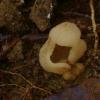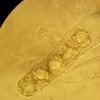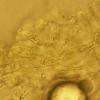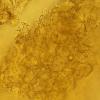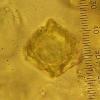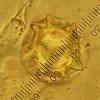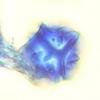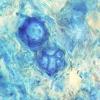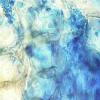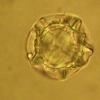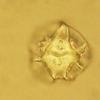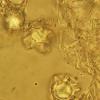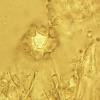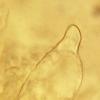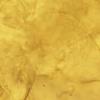
20-12-2025 23:08
Patrice TANCHAUDBonsoir, récolte sur sol sablonneux dans l'arri�

21-12-2025 09:32
Hello.A tiny ascomycete found embedded in wood in

20-12-2025 15:47
Mirek GrycHi.These grew on pine wood that was heavily covere

18-12-2025 21:17
Pol DebaenstThe identification took me to Byssonectria deformi

15-12-2025 07:09
 Danny Newman
Danny Newman
indet. Rutstroemiaceae sp. on unk. fallen leavesMc

19-12-2025 10:10
Patrice TANCHAUDBonjour, récolte réalisée en milieu dunaire, a

18-12-2025 17:23
 Bruno Coué
Bruno Coué
Bonjour,je serais heureux d'avoir votre avis sur c
 Hello,
Hello,this fungus was found in a tropical lowland dipterocarpous forest of East Kalimantan. It was a single fruitbody partly hiden in the soil, irregularly shaped, beige, hollow, with two holes, measuring 26 mm in the broadest part.
It has a strange structure under microscope, quite difficult to read for me. I can see there a layer of globose-angular, thick-walled cells (20-43 micrometers, the walls up to 2 micrometers) and a layer of thin cylindrical cells running in different ways (3.5-7 micrometers broad).
Spores are yellowish, globose, ornamented with isolated warts, tubercles and high ridges resembling wings (up to 6 micrometers high), measuring 14.5-15.5 micrometers without ornament, 22-25 including ornament.
Asci are non-amyloid, octosporic, uniseriate.
What could it be? It resembles Ruhlandiella with the spores, but the asci are not amyloid and the shape is "wrong". Another idea was Hydnotrya. I really don´t know.
Thanks in advance for any ideas,
Zuzana

I think this is close to Lazuardia lobata, a tropical cup-fungus. I published a paper on this species in Ascomycete.org journal with M. Pélissier who collected it in Mayotte Island.
The main difference with your collection is the spore size.

Thank you very much for advice! Yes, my spores are larger and have richer ornament. The shape of fruitbody is different too - maybe it´s not visible well in the photo, but the fungus from Borneo had holes, but it was closed (little bit potato-shaped). I also didn´t notice bluish colour in the fruitbody.
Z.



